Purchased for $4 million in late 2012, the 6,500-square-foot Piedmont mansion at 636 Highland Avenue, which was built for the Ghirardelli family in the early 1900’s, resold for $4.65 million in October of 2016, representing total appreciation of 16.3 percent for the restored East Bay mansion over those four years on an apples to apples basis, or an average of 4 percent per year.
And having returned to the market priced at $5,488,888 this past November, a sale at which would have represented average annual appreciation of 4.2 percent since the fourth quarter of 2016, the resale of 636 Highland Avenue has just closed escrow with a contract price of $4,920,000, representing total appreciation of just 5.8 percent over the past four years on an apples-to-apples basis, or 1.3 percent per year, while the Bay Area index for single-family home values was up 26.0 percent over the same period of time.
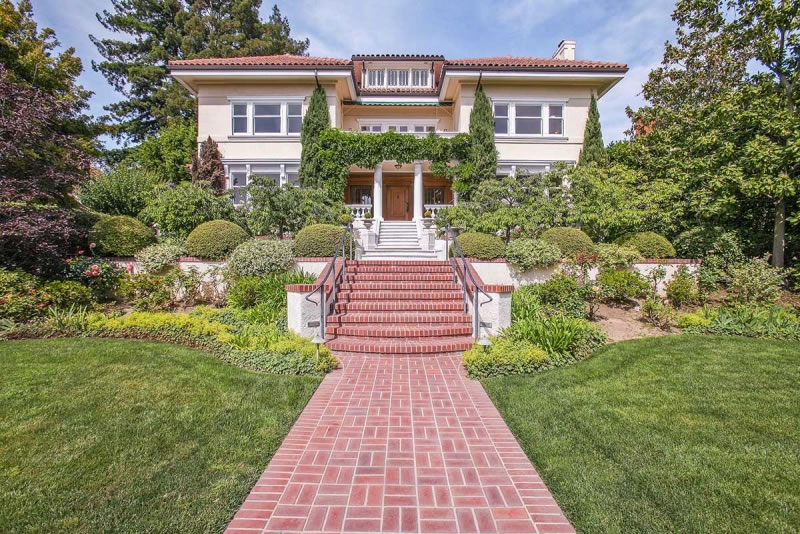

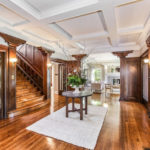


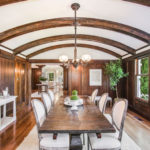
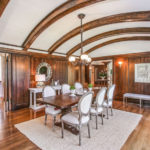
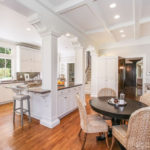
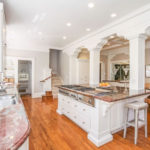
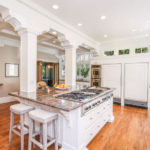
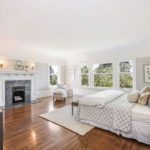
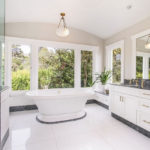
How much would a house like this go in SF a proper? What’s the price differential for Piedmont versus desirable neighborhoods of SF? I genuinely don’t know.
These types of homes are struggling everywhere, especially places like Pac Heights, SF.
They are not desirable due to the historical / formal feel to them, as well as the expansive size that no longer fits modern families. However they are too architecturally interesting and expensive to gut and flip (there are rare exceptions to this, namely Marc Pincus’ former home).
Interesting. I have not been aware of this. What type of homes do families desire? Open floor plans used to be what everyone wants. Now people are preferring more traditional layouts.
What about this house do families not want? Old fashioned layout? Fussy details?
Flippers are gonna flip.
They then turnaround and try to convince everyone that what they are producing is “what the market wants”. So, yes, of course Panhandle Pro is going to post and say that whatever interior style is most profitable for flippers (this is probably still “open floor plans”) is “what families want”, whether or not that is true, because that position supports his pecuniary interests.
I would take this house as is. Closets can be built, very elegantly and in style with this house. It wouldn’t be cheap, but that’s what this house needs.
I still love formal dining rooms and am pushing forty! If a house is spacious enough, with a family dining area, I find them quite elegant.
This is a mystifying argument. Flippers don’t do any convincing. They buy, remodel, and let the agent do the talking. They put huge sums of money on the line, speculatively, betting on what people will want. Usually they are right, thus their industry. Sometimes they are wrong.
Whether it’s flipped homes, condo buildings, museums, rented apartments, etc… what we call “modern” is the “in” aesthetic right now and flippers build accordingly.
Flippers merely follow the market, not create it. PP is right. Interiors like this have historic value but struggle immensely in the market. Owners have put too much money into them to sell at a fixer price, but most buyers at non-fixer prices desire a different aesthetic, layout, and amenities. It is what it is. I love looking at historic homes too but there is no question they are a hard sell.
Formal dining rooms are likely not real popular and there doesn’t appear to be any photos of the Master bedroom. Old timey houses have old tiny closets
There are photos of the master bedroom, it’s just larger than your entire house so you might not have recognized it.
I think it’s fairly silly to suggest that with 6200 sq ft of interior space you’d be unable to find a place to put your shirts.
The formal dining room is one room in the house, out if many, and it can frankly be repurposed as any other type of room, including as a casual family den/entertainment room, etc. So, this fixation on the house supposedly not being as desirable because of a “formal dining” room is nonsense—it is staging and nothing more. And, as noted, the home has a gigantic primary bedroom, and a picture is included.
Also, what people seem to miss is the home sold for $4.92 million, a generous sum of money and more than it sold for in either 2012 or 2016. Homes are meant to be lived in, and unless you are a professional real estate developer, your focus when buying a home should be livability (according to your taste) and if you can afford the monthly payments and upkeep. If you want to gamble at making big bucks, short stocks or invest in cryptocurrency—a home is a personal residence, nothing more.
Could it be that out of the several billion households in the World there are a few that want “this type” of house (whatever that’s supposed to mean)? exactly as it is ?? Actually it would only take two of them bidding to establish a price, and while 99+% will never even see this place, that still gives us a lot of leeway.
Open floor plans outsell more traditional layouts, over and over again. Let’s put it this way: I don’t see walls being added by anyone. I only see walls removed, and it’s been this way for a few decades now. Where are you seeing preferences for traditional layouts?
The foyer is too formal / too big / too much dark wood. Ditto for the dining room. The kitchen is closed off from everything else and an odd layout. 6,000 square feet is unwieldy and feels wasteful / too much.
I agree that the dark wood is too much.
As for traditional layouts, this is just speaking from personally buying a SF house with a traditional layout. All of my family and friends (about 10) who have bought in the last three years have bought traditional layouts—these are all middle-aged folks. Then again, these tend to be houses on the larger side where you can have a traditional living and dining room and still have a very spacious family room connected to the kitchen.
So I guess I have seen hybrids as being in high demand, where you can get both if you have the requisite square footage.
I like this re-model, but then I’m partial: I grew up in a sprawling home on the Peninsula built of solid redwood in 1903. That house had a butler’s pantry, pocket-doors, and a beveled glass front door. Of course it will not be right for everyone. But I feel someone, with a discerning eye, will appreciate the space and all the attention to details. Brings back such nice memories.
I know the family who sold the home. They are not flippers but rather upgraded from a smaller home in Piedmont to a larger one. They moved for the schools but due to the pandemic affecting work, recently left the area. If you look at other “normal/lesser” homes in Piedmont ($2-4 mln range), you will see significant appreciation in line with what Socketsite’s editor is describing (esp. in the $1.5 – 2.5 mln range which seems to be the hottest part of the market). I am choking on my own spit when I say $1.5 -2.5 mln is a normal price. Finally, I think picking out one home to represent a trend is not the most accurate, although certainly makes for more entertaining reading.
While one data point, that we’ve consistently tracked over the past decade, it’s not the only “one” in our cart…
No doubt, this site has tracked multiple apples to apples home. That is not at all in dispute and is indeed the best way to measure how a particular homes value has changed (minus additions, etc.). But looking at a larger picture of the Piedmont market as a whole (I do not pretend to know anything about anything outside of my small town), the prices for most of the sub-$4 million homes has risen quite consistently over the past 5 years since I’ve been here. Just take a look at average selling price/sq foot (while admittedly not the best for residences outside a city, it does provide a reasonable metric) which has risen from about $600 –> to about $800-1000 sq/ft. As is true from what others have posted about other cities, the higher end of the market (I’m going to call it $4 mln+ here – yikes!) tends to sell more slowly and for less per sq/ft compared to smaller homes.
With re: to the hot-spots in piedmont, there are roughly 3 areas (Baja -close to Grand Ave, Central – around Highland Ave, and Upper roughly above Mountain Ave and south of Hampton). Baja has smaller homes (~1800-2400 sq/ft) but higher walkability score and have been going for $1000+ sq/ft, Central – larger, older homes like the example here (2400 sq/ft +) sell for around $900-$1000 sq/ft, Upper – larger, more modern homes (2400 sq/ft +) is about $800-900 sq/ft. I most often see homes in Baja get the most bids and go quickest – I suspect the buyer density is most crowded in that range.
If you think about where the demand is coming from, I think it’s mostly SF dwellers leaving the city due to schools for either Mill Valley/Marin or Piedmont/LaMorinda.
Thanks for the insight. Really interesting. Yes, this friend bought in central Piedmont and seemed that you would get much, much more (massive lots and homes over 5000 sq feet) once you hit 3.5-4 million, but I guess that’s harder for dual income couples to afford. Most dual incomes seem to be able to hit the 2.5 mill to just above. Is that why these more “modest” central homes go for more square footage wise? Just more people competing at that price point.
You are correct. Everyone I know who has moved there has moved for the schools and treated the extra million or so they paid for those house as a ‘tuition’ hence they were stretching their mortgage more than they would like.
Still, for 2.5 or a bit more you can get a nice spacious house with good schools. In SF, you’ll get a smaller condo and no schools—so I see the appeal.
Do you expect these prices to stay and continue to rise?
I don’t know where exactly that ‘pain ceiling’ is where the buyers start thinning out but I am seeing homes $3.5 – 4 mln sitting longer (i.e. 4-6 wks) – the example above was a somewhat outlier as it sat for a long time. Check out how other higher end homes here have done and you’ll see they have gone much quicker. I have never figured out why Central Piedmont is so appealing and expensive – if it were me I’d prefer the walkability of Baja or my views and yard space in Upper Piedmont. I suspect it may be the realtors telling buyers that Central is the place to be =).
What’s interesting is how homogenous the rationale is for most of the people who have moved here recently (as opposed to the older wealth homes that are passed on from one generation to the next). Almost everyone I’ve met here did the calculation about having 2-3 kids in private schools from middle school –> high school and figured that at least they will get their money back if they threw it into the house rather than tuition. That said, people here can and do still send their kids to private school for a variety of reasons.
I think prices here will rise slowly – if you look at Compass’s hypergranular monthly market report, you can see Piedmont historically rises slower than the rest of the wealthier Oakland/Berkeley/Kensington prices but doesn’t drop as much in downturns. I suspect people who live here likely have capital and savings so there’s rarely a fire-sale or foreclosure. Cheap interest rates, great stock market gains all benefit the typical buyer here. I suspect what is happening in Oakland USD school district (lottery system, etc.) is further fueling this move – there are a handful of folks I’ve met who moved from Crocker Highlands and Montclair to a Piedmont, accepting a much smaller home but guaranteeing a place in our school system in return. With re: to the pandemic causing people to move – I have known a few who have left, but it was to a second home in Maui or Tahoe and not permanent =p.
Eric, this is my experience and what I’ve seen as well in Piedmont. We moved from SF in 2009 and bought our current home in 2014 — and I never turned off my redfin alerts, so I’ve seen the asking and sale prices of pretty much every home that’s come on the market in Piedmont over the past 8-9 years. Junky, small, places have gone up substantially so that whereas $1M used to be the absolute minimum, it feels like those places are bid up to $1.5 now; whereas homes that are 3-4x as nice, and significantly larger, struggle a bit in the $3.5/4+ range. Just fewer buyers.
(I also know the family selling the house — the husband/father, anyway — and it’s kind of funny to actually finally have one of these “who cares what someone does to the inside since no one here will ever see it anyway” houses that I’ve actually been in several times. This wouldn’t be what I’d build from scratch in 2021, but the sales price does still strike me as low for what it is. The area in the back is quite nice for entertaining too — as is the front; they had quite a few people over for the last pre-Covid 4th of July.
I live three blocks away (in a significantly less grand home, albeit with better views).
This is interesting. I have a family friend that bought a 2700 sq foot ‘lesser home’ in Piedmont. South of highland avenue so not in the ‘prestigious’ part of Piedmont—from what I am told by others
They paid a bit under 3 mill in 2018, seemed ridiculously high for what they got. A very nice house, but nothing approaching something like this. Did they overpay? I assume it has kept its value, but not really increased. Is the hot spot in Piedmont between 2-3 million?
I’d love to know more about the market there.
Yes. You get much “better value” at 3.5M+ in Piedmont. There is almost nothing over $6M (there’s one huge place now that is, but you’re talking estate properties at that price point), not a whole lot between $4-6M, and nothing under $1.5M. So yes, almost anything that’s 2500-3300 square feet or so is going to be in that $2-3 million (more recently, more like $2.4 – 3 million) range.
And as Eric suggested, there has definitely been a shift in popularity to the stuff further down the hill that’s walkable to Piedmont Ave (which is in Oakland; whereas Piedmont’s main artery is Oakland Ave., go figure) as Piedmont has gotten younger. So maybe not “prestigious” — but some of the less central areas that were once probably considered more prestigious than “Baja Piedmont” (e.g., the east end) are definitely less desirable now.
Ah, quite the barb Jeffery W. Baker!
Indeed the 6200 sqft leave plenty of room for hampers, dressers, and rolling racks. That might be a great use for the formal dining room, formal sitting room, or formal receiving foyer!
Is that huge range vented with downdraft suction? I doubt downdraft venting could keep up with a small range top, let alone this nine burner top. Another kitchen just for show?
At least they got the Temple of Bathing right with its bay of windows and ample perambulation space for the towel servants.
I say at $1M to $2M dollar range, the price is going through the roof. Let’s look at this apple to apples:
34 Clipper St 94114. Just sold for $2.325M (listed for $1.9). Last time sold in November 2016, for $1.5M. That is about 55% appreciation. The market is heating up so much, yet so many people on this site seems insist on market is still crashing, as if they take pleasure in it.
$888/sf in prime Noe in late 2016???
Something seems off with this.
Keep in mind that when 34 Clipper was purchased in 2016, it was tenant occupied (versus most recently having been delivered vacant). In addition, plans for a garage addition have since been drawn.
But you’re correct, the lower end of the market had been outperforming the upper end (which shouldn’t have caught any plugged-in readers by surprise).
The “lower end”? meaning, the higher end in terms of CS Bay Area values ?
Love dark wood, hate dark wood. Love brick sidewalks, hate brick sidewalks. Your taste. The reason these houses don’t have a large pool of interested buyers is this just isn’t how most families live anymore.
In 1904, the family probably consisted of Mother, Father, four children, Grandmother, maiden Auntie Rose, and various family hangers on who would show up and stay months at a time. There was an upstairs maid, two downstairs maids, a cook, a chauffeur, two gardeners, and a “boy.” The kitchen was in the basement, as far from the family as possible. Father was driven to the ferry terminal to go to work. Mother supervised the household and socialized with her girlfriends. There were three hot meat and potatoes meals served every day. Dinner every night was 8, 10, 12 people.
Come Memorial Day, Mother and the children decamped to their summer cottage in Woodside or Napa. These destinations were a day’s drive away, and they stayed Memorial Day to Labor Day. Father decamped to the PU Club for the summer, spending evenings with his buddies over whiskey, cigars, poker, and occasional dalliances. He would join the family at the cottage for Memorial Day and the Fourth of July weekends. He then came down for the month of August (when everyone took their vacation and The City shut down) and stayed until Labor Day. Nobody flew off to NYC for a long weekend or Hawaii for week. This is why high school Ski Week is a week not a weekend. Some years they would do the three month grand tour of Europe. All this started to go away in 1913 with the institution of Income Tax, the gradual education of the “service class”, the drop off of working class immigration during the Depression, etc.
Today, the family is most likely Mom, Dad, and one or two kids. They double as maids and workmen. This house probably requires two cleaning ladies a full day a week, and a blow and go gardening service. Meals are catch as catch can in the kitchen. A dinner party is two couples in a dining room sized for 24. Every weekend the family is off to their place in the Wine Country, unless they’re jetting off to Sun Valley or NYC or Maui. It takes google calendar to keep track of all the various dance lessons, little league games, tennis lesson, non-profit boards etc. There is a TV in every room (even though most of these rooms don’t have any logical place to hang one), and the kids are on their phones all the time anyway. Mom is the chauffeur and does most of the housework and, when not eating out or ordering in, cooking (aided by time-saving appliances not yet dreamed of in 1904).
Anyway, servants are a nuisance, the roomba doesn’t bring with it human drama and visa problems, and who has time to walk hundreds of feet just to get ready for the day, grab a cup of coffee, and get off to work. And while there are people who still have hot and cold running servants, they tend to live in $20 million dollar houses (that they have fully “remodeled” to their particular taste) not $5m houses.
Nice summary of the social contrast across the ages Jim.
“Love brick sidewalks, hate brick sidewalks”
Brick sidewalks (and roads) are awesome when built traditionally as cobblestones set in sand. Unfortunately most brick pavement done in the Bay Area is this ugly cement grouted style. Then it gets uglier once it starts cracking.